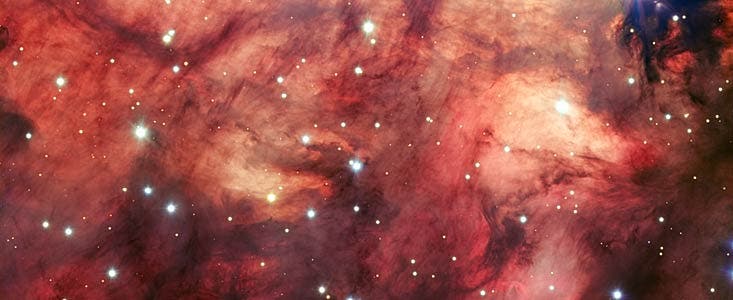A rosy, star-forming nebula thousands of light years away from Earth is “blossoming” in a dazzling cosmic spectacle. Messier 17, also known as the Omega Nebula, the Swan Nebula and the Horseshoe Nebula was shot in some remarkable photos revealed by the European Space Agency.

Messier 17 is located some 5,500 light years away from Earth, and spans across 15 light years itself. The total mass of the Omega Nebula is an estimated 800 solar masses, but it is considered one of the brightest and most massive star-forming regions of our galaxy.
The white is real color, but the red hue is a chemical signature of the hydrogen.
“Its coloring is a signature of glowing hydrogen gas,” ESO said in a statement. “The short-lived blue stars that recently formed in Messier 17 emit enough ultraviolet light to heat up surrounding gas to the extent that it begins to glow brightly. In the central region the colors are lighter, and some parts appear white. This white color is real — it arises as a result of mixing the light from the hottest gas with the starlight reflected by dust.
Another mind-blowing photo of the nebula was taken in 2012, also by the ESA:

The first attempt to accurately draw the nebula (as part of a series of sketches of nebulae) was made by John Herschel in 1833, and published in 1836. Sketches were also made by William Lassell in 1862 using his four-foot telescope at Malta, and by M. Trouvelot from Cambridge, Massachusetts.


